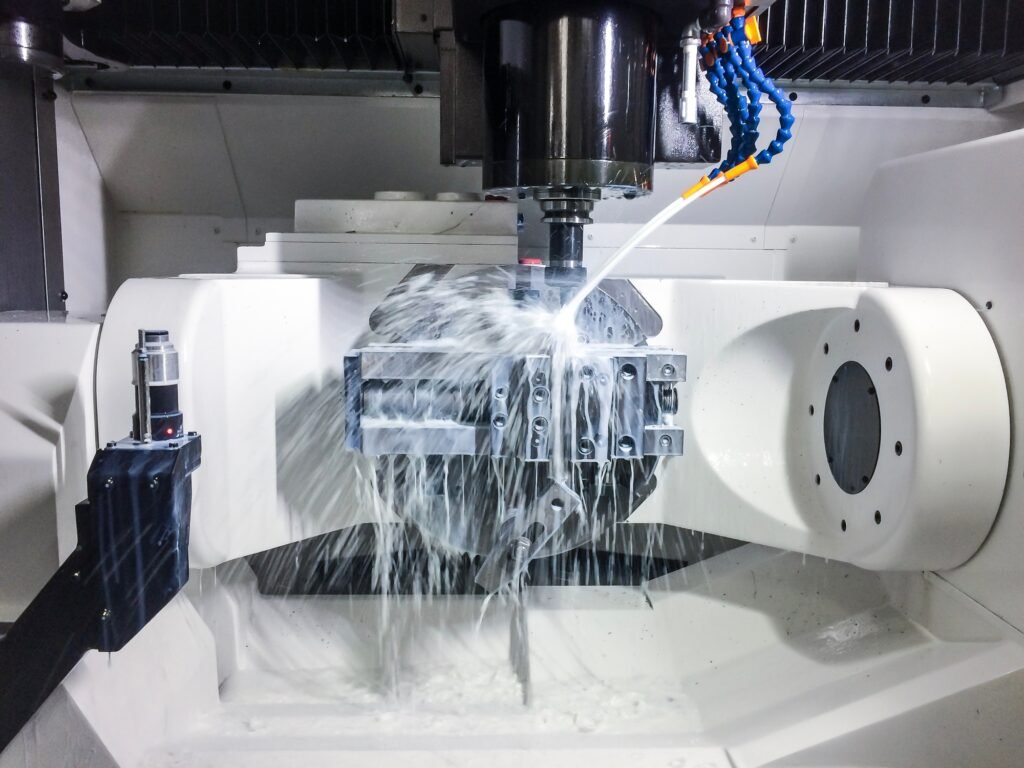What is 5-Axis CNC Machining?
5-axis CNC machining refers to a method where a cutting tool or workpiece moves along five different axes simultaneously. Unlike traditional 3-axis machining (X, Y, Z), a 5-axis machine adds two rotational axes (A and B), allowing the tool to approach the workpiece from virtually any direction. This capability significantly enhances the ability to create complex, high-precision parts.
How Does 5-Axis CNC Machining Work?
In a 5-axis machine, the cutting tool or the table rotates around the X and Y axes while moving linearly along X, Y, and Z axes. The two additional axes of rotation allow intricate contouring and access to difficult angles without the need for multiple setups or fixtures.
There are two primary configurations:
- Rotating Table with Fixed Spindle
- Tilting Spindle Head with Rotating Table
Both configurations achieve the same result — precise multi-angle machining — but are chosen based on part geometry and production requirements.
Key Advantages of 5-Axis CNC Machining
- Single Setup Efficiency
Complex geometries can be machined in a single setup, reducing the need for repositioning and re-clamping, which saves time and improves accuracy. - Higher Precision and Surface Finish
With fewer setups, there’s less risk of human error. Continuous cutting improves surface finishes and meets tight tolerances, often required in aerospace and medical industries. - Ability to Machine Complex Shapes
5-axis machining is ideal for parts with undercuts, deep cavities, or intricate curves that are impossible to achieve with 3-axis machines. - Reduced Lead Time
Streamlined workflows and minimized setups allow faster production cycles, which is crucial in prototyping and high-demand production. - Extended Tool Life
Optimal tool orientation during machining reduces tool wear, enhances cutting performance, and increases tool longevity.
Typical Applications of 5-Axis CNC Machining
- Aerospace Components: Turbine blades, structural parts with complex curves.
- Automotive Prototypes: Engine housings, suspension components.
- Medical Devices: Orthopedic implants, surgical instruments.
- Mold and Die Making: High-precision molds for injection molding and die casting.
- Defense & Energy Sectors: Precision parts for military equipment, oil & gas components.
Challenges and Considerations
While 5-axis CNC machining offers unmatched capabilities, it also comes with challenges:
- Higher Machine and Tooling Costs: Investment in 5-axis machines is significantly higher than 3-axis systems.
- Complex Programming: Requires advanced CAM software and skilled programmers to create effective toolpaths.
- Operator Expertise: Machinists must understand 5-axis kinematics and collision avoidance strategies.
When to Choose 5-Axis CNC Machining?
5-axis machining is the best choice when:
- The part requires machining on multiple sides with tight tolerances.
- Complex curves or geometries need to be achieved without multiple setups.
- Reducing production time and increasing accuracy is a priority.
- Surface finish requirements are critical (e.g., aerospace or medical parts).
Conclusion
5-axis CNC machining is a powerful solution for manufacturers aiming for high precision, efficiency, and the ability to handle complex geometries. Despite the higher initial investment, the long-term benefits in productivity, quality, and capability make it an essential technology for advanced manufacturing industries.


